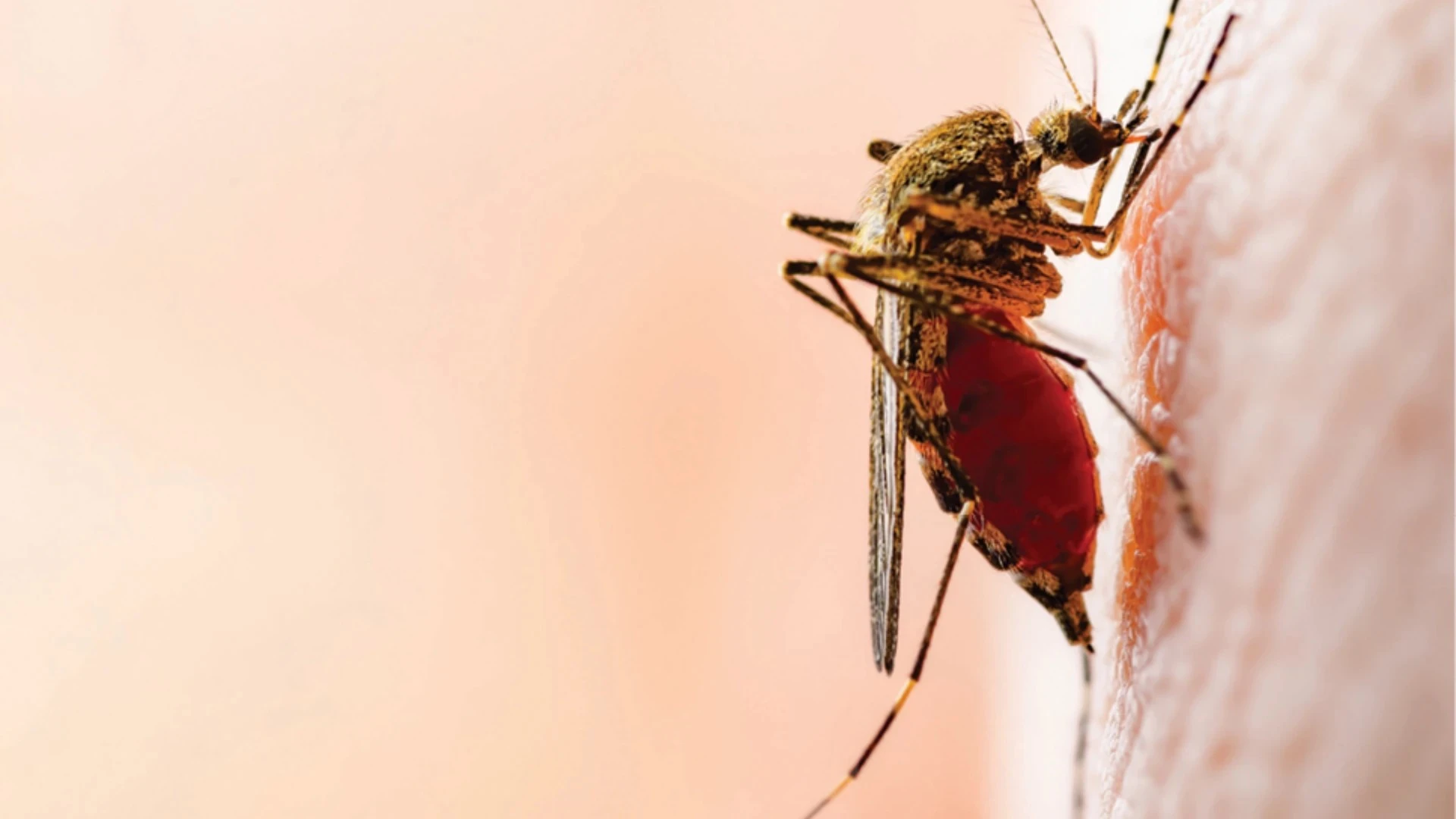
Credit: Adobestock
Editor’s note: July PCT includes several tick control features from leading industry professionals. In addition to numerous cockroach control features in the pages of PCT, in the following feature Kristen Stevens, BCE, Fox Pest Control, provides a review of the who, where, when and why of tick control.
Ticks – no one likes them, and no one wants them. But as pest professionals, we absolutely need to know about them. Together we will discover the who, where, when, and why on ticks. This knowledge will help us to be better informed about these pests as the weather heats up this summer.
The who: There are several notable types of ticks in the United States. Ticks are not insects but rather arachnids. Unlike insects, ticks have eight legs and two body parts: the head and cephalothorax. They do not go through metamorphosis but do have four distinct life stages: egg, larvae, nymph, and adult. Notably, although the adult stages have eight legs, the larval stage only has six. To progress from one developmental stage to the next, ticks require a blood meal. They practice an interesting behavior known as questing to find their host. Questing involves a tick resting on some high vegetation with its front pair of legs held up waiting for a host to come by so it can attach to the host.
There are several species of ticks, and they are categorized as either soft or hard ticks. Soft ticks have a nondistinctive sac-like shape, and hard ticks get their name because of their scutum, the hardened portion on the top side of their exoskeleton. It's critical for us to know which ticks we are dealing with. As PMPs we don’t tend to come across as many soft ticks as we do hard ticks. The soft ticks that are found in the common fowl tick (Arga persicus) and the relapsing fever tick (Ornithodorus turicata). The fowl tick is generally found in the southern and southwestern United States. It is typically in chicken houses and around chickens. The relapsing fever tick is only sometimes found in buildings and its distribution includes the western and southern United States.
Hard ticks are the variety that we most commonly encounter as PMPs. These include the brown dog tick, American dog tick, blacklegged tick, and the lone star tick. The American dog tick (Dermacentor variabilis) is considered a three-host tick, i.e., a tick that needs three hosts to complete its life cycle. This tick can transmit Rocky Mountain spotted fever. Since larvae hardly attack humans, adults are primarily responsible for transmission of the disease. These ticks are also capable of transmitting tularemia and canine tick paralysis. Another common tick is the brown dog tick. These ticks are interesting in their behavior because they, unlike other species, can complete their entire lifecycle indoors. They also have a large reproductive potential: a female brown dog tick can lay up to 5,000 young in her lifetime. As the name suggests, they mainly feed on dogs, but they are able and willing to feed on humans when necessary. It is vital that these ticks are eliminated as soon as they are discovered within a home.
Lone star ticks are so named for the prominent white dot found on the top of the female’s scutum. These ticks can transmit Rocky Mountain spotted fever, tularemia, tick paralysis, and other tick-related diseases. Blacklegged ticks are another commonly encountered tick species. They are the main vector for Lyme disease, with which the CDC reports that more than 300,000 Americans are diagnosed each year. Both adults and nymphs can transmit the disease; however, they must be attached to their host for 36 hours for the disease to be successfully transmitted.
The where: Let’s get a better understanding of where these ticks are and what areas we should be inspecting to successfully treat ticks. Different ticks prefer different climates, so you will find different species depending on what part of the country or world you may be in. However, all ticks are generally consistent with which habitat they prefer. Many ticks spend most of their life on or near the ground, where they wait for a suitable host. Some will feed from a variety of hosts and others from a single species. Typically, ticks are found in wooded and grassy areas where the animals they feed on live and roam. Some of these could be birds, mice, squirrels, rabbits, deer, and other rodents. However, there is always an exception to the rule; some ticks will live in urban areas, such as the brown dog tick, and even in beach and coastal type areas. Ticks prefer to stay close to the ground because potential hosts are within easy reach, and they prefer both shady and moist areas to reside in. More specifically, they prefer wooded and grassy areas including shrublands, meadows, forests, trails, gardens, and around homes. However, it is not just homes built in “wild spaces” and surrounded by vegetation that they prefer. There may also be parking lots, ball parks, retail centers, and roads covered with vegetation that provide excellent hiding places for ticks.
While you may be well aware that the United States is not the only country that deals with ticks, did you know that ticks are found on every continent except for Antarctica? The greatest species diversity among ticks can be found in more tropical areas of the world. Each species has its own unique range and distribution. Some live across widespread regions while others are isolated to a small area or single island.
The when: Next we need to consider when we should be worried about encountering these pesky eight-legged pests. Ticks occur in many terrestrial habitats ranging from cool, arboreal, northern forests to hot, arid deserts. Each species has become adapted to the habitats where it is generally found. However, there are very few species that are active during the cooler parts of the year. Most species tend to prefer warmer weather. Once temperatures begin warming, ticks will begin emerging. Climate is the main reason behind the expasion of tick breeding and biting seasons. Brief, mild winters and long, hot spring and summer seasons are excellent incubating periods for ticks, especially in the Northeast and Midwest. Not only do ticks prefer the warmer weather and climate, but also such conditions allow vegetation to grow higher and in larger volumes, which makes for an abundance of new tick breeding habitats. Ticks tend to choose animals that also prefer warmer climates and will migrate to these warmer areas. Tick season is upon us, and so we must have our control methods readily available.
The why: We as pest control professionals should care about ticks and their increasing presence for the protection of both ourselves and our customers. Ticks pose a major concern for public health because of the many diseases that they transmit. Ticks are responsible for several pathogens that are harmful to both humans, and some are also harmful to their pets. These diseases include Rocky Mountain spotted fever, Lyme disease, tick heartworm and paralysis, and tick-relapsing fever. Some of these are more common than others, but they are all important for us to understand. Rocky Mountain spotted fever is a common and widespread disease of ticks. It is spread by several species of ticks, specifically American dog ticks, lone star ticks, and brown dog ticks. Most occurrences of this disease are east of the Mississippi River in the south-central and southeastern states, especially along the Atlantic coast. Lyme disease is another important disease to note. Lyme disease is primarily transmitted by the blacklegged tick. With more than 300,00 occurrences of the disease each year, it is one of the most important tick-borne diseases. Although most tick-borne diseases are well understood, one that is the most misunderstood is tick paralysis. This occurs when a tick feeds on a host, and the host is then afflicted with a paralytic condition that could potentially result in death. However, once the tick is removed, symptoms rapidly disappear.
Now that you know the who, where, when, and why on ticks, we as pest professionals need to bring the 'what’ that ticks fear. We must also understand what to do when we encounter ticks. They must be removed as soon as they are discovered. In the field, we trek through many potentially tick-infested areas. Just as Brad Paisley sang in his 2007 country hit, it’s a good thing to check for ticks. When they are found, make sure to remove them with tweezers as close to the skin as possible to remove the entirety of the mouthparts. Then wash the area well with alcohol to prevent any disease transmission. Many countries around the world do not have the same access we do to pest control, and in turn some of them suffer significantly from tick- and insect-borne diseases. We can make a difference by freeing our customers from worrying about ticks in and around their homes this summer.
Latest from Pest Control Technology
- OvoControl Now Available in Chile
- Envu Announces Savings Programs for Pest Management Professionals
- Follow the Trail
- Carpenter Ants: Understanding the Bothersome Burrowers
- Massey Services Acquires Insight Pest Solutions of San Antonio
- Target Specialty Products Expands Sales Leadership Team
- Mosquito Joe Promotes David Price to Vice President of Strategic Growth
- Abell Pest Control Recognized as One of Canada’s Best Workplaces in 2025






